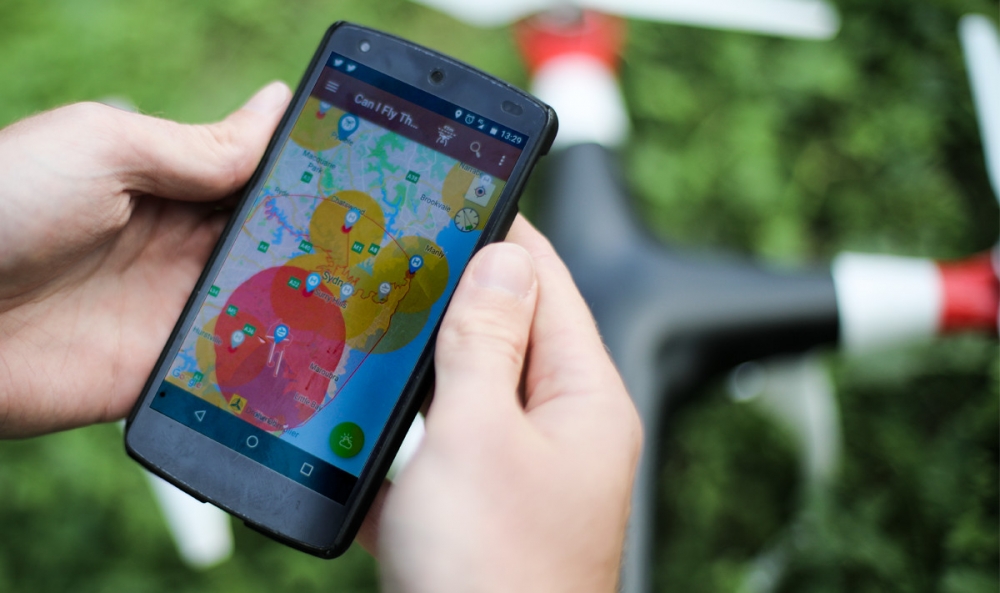Australian authorities have released a new smartphone app aimed at keeping drones away from passenger and other aircraft.
The “Can I fly there” app has been developed by the Civil Aviation Safety Authority in conjunction with software company Drone Complier and clearly shows crucial drone no-fly zones and those where drone operators need to exercise caution.
CASA says it is the first official app to be released in Australia to help drone flyers stay safe and follow safety regulations, which are also available on the software.
The no-fly zones are marked in red and include areas around major airports, the flight paths of smaller airports and helicopter landing areas as well as restricted and military airspace.
Caution zones, where aircraft are known to fly at low altitudes, are shown in orange.
Other information on the app includes satellite photos of runway layouts and whether airports have air traffic control services.
Information is also shown for uncontrolled aerodromes and aircraft landing areas, with written advice about what to do when flying a drone in those locations.
Transport Minister Darren Chester said the app aimed to help drone operators fly safely and responsibly.
“The Government is committed to fostering an environment that ensures the operation of drones are conducted safely, whilst also facilitating growth and innovation in the use of this exciting technology in Australia,’’ he said.
“Drones have the potential to improve productivity, reduce costs, and improve workplace safety, but must be operated safely.’’
The use of Remotely piloted aircraft systems (RPAS), as drones are officially known, has burgeoned in Australia among recreational and professional users. They are used in areas ranging from agriculture to mining and real estate to aerial mapping, scientific research, policing and fire-fighting.
But the rapid increase in drone numbers has also boosted the risk to aircraft with the chances of a close encounter between to forecast to jump by 75 per cent in 2017.
A report by the Australian Transport Safety Bureau on the safety of drones used forecasts based on the number of registered operators as well as Google trends shopping data to estimate the number would double by the end of the year.
The report found there had been 180 safety incidents involving drones between 2012 and 2016, including crashes. High capacity air transport accounted for 45 per cent of the reports with charter operators accounting for a further 5 per cent.
Of these, there were 108 instances of “near encounters’ between drones and aircraft — where a drone forced an aircraft to manoeuvre to maintain a safe distance or was seen near an aircraft which would have done so if there had been more opportunity.
More than 60 per cent of these incidents occurred in 2016 and the report said statistical models forecast a 75 percent increase this year.
A serious infringement occurred in Perth in April when a drone allegedly came within 300ft of a Singapore Airlines A350 doing a low-level fly-over of the city to celebrate the airline’s 50th year of operating to the West Australian capital.
Read about the Perth incident.
Chester said much work was being done globally on drone safety and security issues and Australia was not alone in facing the emerging challenge.
“Australia was one of the first countries to regulate drone operations,’’ he said. “Strict operating rules have been in place for a number of years and, contrary to recent reports, the amendments made last year maintained these safety rules.’’
























